If you’re looking to start or grow a business as an interior decorator, you’re in luck! There are a number of great tools out there that can help you do just that. In this article, we’ll discuss 26 of the best tools to grow your interior decorating business and find success in the design industry.
Specifically, we’ll look at software tools, business tools, and essential on-the-job supplies that’ll help you reach your goals.
So, whether you’re just starting out or you’ve been in the game for a while, these must-haves will help you take your career to the next level!
Pro Tip: Were you born to be a designer? Then you NEED to check out our Ultimate Guide to becoming an interior decorator! This informative article will walk you through the entire process from start to finish – even if you have no experience!
Frequently Asked Questions
Let’s begin by first answering some of the most commonly asked questions about the interior decorating industry…
What Are Interior Decorators Called?
An interior decorator is a professional who helps design and decorate residential and commercial spaces. The term “interior designer” is often used interchangeably with “interior decorator,” but there is a difference between the two professions…
What’s The Difference Between Interior Design and Interior Decorating?
This is a great question – and one that often gets confused. The main difference between the two terms is that interior designers are typically required to have a degree or certificate in interior design, whereas interior decorators are not.
Additionally, interior designers usually work on larger-scale projects, such as commercial spaces or new construction homes. They may also be involved in the architecture of a space.
On the other hand, interior decorators typically work on smaller projects, such as redecorating a room in an existing home. That said, many decorators still do work on larger projects. Importantly, they just won’t be a part of the architectural process.
As a rule of thumb, keep this in mind: interior designers can also be interior decorators, if they so choose. Their training qualifies them to do both. Interior decorators, on the other hand, cannot also be interior designers without the proper schooling and qualifications.
While there is a distinction between the two terms, at the end of the day, they both involve working with clients to create beautiful and functional spaces. And luckily, there are plenty of tools out there to help you do just that (which we will delve into shortly)!
Want to learn more about the difference between interior designers and interior decorators? Check out this blog post for a more thorough, comprehensive breakdown!
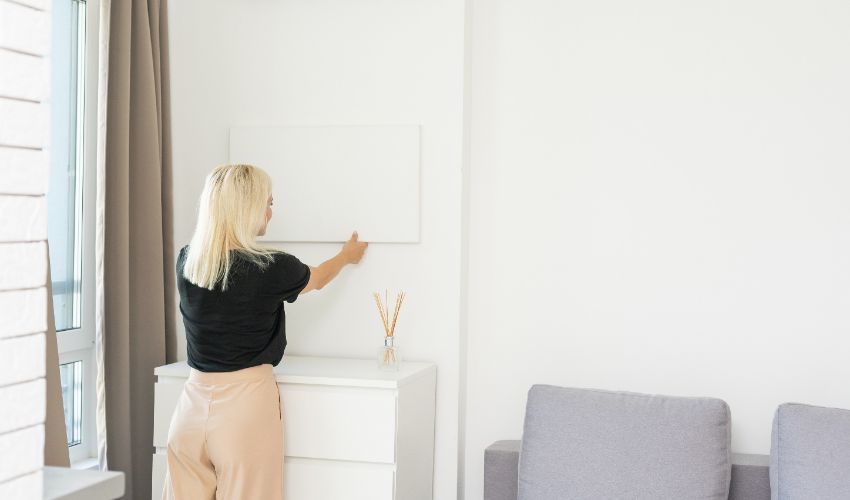
What Do Interior Decorators Do?
An interior decorator’s job is to make a space look and feel good. This involves choosing furniture, colors, fabrics, finishes, and more to create a certain atmosphere or mood. The goal is to reflect the client’s taste and style while also taking into account the function of the space.
For example, a client might want a light and airy feel in their bedroom. So, an interior decorator would select items like sheer curtains and light-colored furniture. They would also take into consideration the layout of the room to ensure that it’s both aesthetically pleasing and functional.
Another example might be a client who wants a more cozy and intimate feel in their living room. In this case, a professional decorator would select items like richly-colored fabrics and furniture with clean lines.
Remember: the goal is always to create a space that looks great and feels even better!
Is It Hard Becoming an Interior Decorator?
This is a difficult question to answer, as it depends on each individual’s situation. For example, if you already have experience working in the design industry, then becoming an interior decorator may not be as hard.
On the other hand, if you’re starting from scratch with no experience whatsoever, then yes – it may be harder to become an interior decorator. The most important thing, though, is to have a passion for design and a willingness to learn.
With that said, there are plenty of resources out there (including this one!) that can help you grow your business – regardless of your level of experience. So even if you’re starting from square one, don’t get discouraged!
Why You Need To Get Certified
In our experience, the single best way to ensure success is to get professional certification training – such as that offered by QC Design School. With a proper certification, you’ll be able to learn everything you need to know about interior decorating from the ground up.
Additionally, having reputable, internationally-recognized qualifications will make you so much more credible in the eyes of potential clients. They’ll see that you’re a true professional who is serious about their craft.
Trust us, getting certified will pay dividends in the long run – even if it seems like a lot of work at first. The bottom line is that, if you’re passionate about interior decorating and are willing to put in the effort, it’ll be an incredibly rewarding experience!
Learn all about QC Design School’s self-paced, online Interior Decorating certification course here!
Are Interior Decorators Worth It?
This will be a common question asked by your prospective clients. The answer is a resounding YES!
For instance, a study by the National Association of Realtors found that home staging (which is similar to interior decorating) can increase a home’s value by up to 20%. And while you might not be working on homes that are going on the market, the same principles apply to any type of space – whether it’s a home, office, or retail store.
An interior decorator can save their clients time, money, and stress by helping them make informed decisions about their space. Not to mention, they can also add their own personal touch to a project – something that would be difficult for most people to do on their own.
In short: yes, interior decorators are worth it!
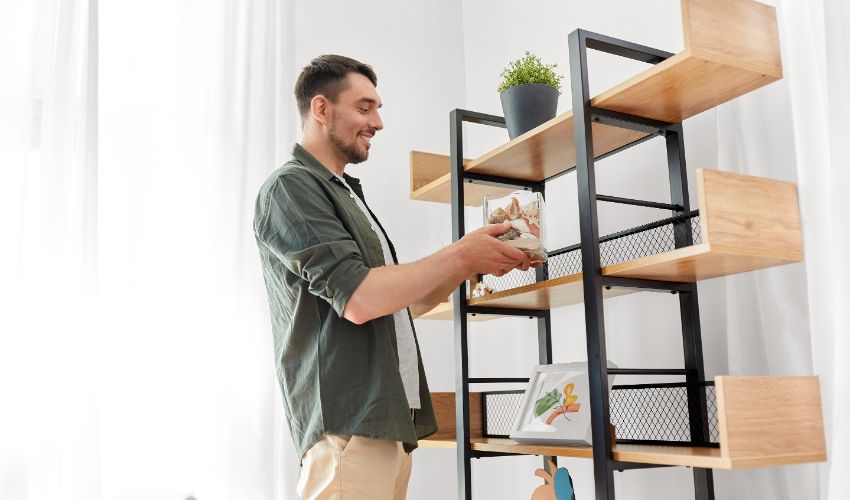
How Do I Become a Better Interior Decorator?
This is a great question, and one that doesn’t have a single, easy answer. The best way to become a better interior decorator is to simply get as much experience as possible. The more you work with clients, the better you’ll become at understanding their needs and wants.
Additionally, it’s important to always be learning and keeping up-to-date with the latest trends. The world of interior decorating is always evolving, so it’s important to stay on top of things!
Of course, another great way to become a better interior decorator is to get certified (which we talked about earlier). Not only will this give you the foundation you need to succeed, but it will also show potential clients that you’re serious about your craft.
Essential Tools To Start an Interior Decorating Business
Now that we’ve gone over some of the basics, let’s talk about what you’ll need to start your very own interior decorating business!
1. An Interior Decorating Business Plan
First up is putting together a comprehensive business plan. This document will outline your overall goals, strategies, and plans for achieving them. Not to mention, if you’re thinking of getting financial assistance from a bank, they’re also going to require this document from you.
Essentially, your business plan will be critical to the success of your interior decorating business!
Now, if you’ve never written a business plan before, that’s totally okay. So long as it contains the following key info, you’ll be good to go:
- An executive summary of your interior decorating business
- The general description of company
- Some market analysis research
- Your sales and marketing plan
- An operational plan
- A brief overview of your management team
- The financial plan and goals you’ve set out for your business
Need a bit more help? Do a little Google research and check out the various free templates and guidebooks available online!
2. Insurance for Your Interior Decorating Business
When it comes to the best tools to grow your interior decorating business, insurance is a MUST! After all, it will protect you in the event of any accidents, injuries, or damages that occur while working on projects (or even afterwards).
Because there are a variety of different policies that you can choose from, you may find yourself a bit overwhelmed at first. Just take your time, do your research, and remember that your business won’t need every type of insurance you come across.
General liability insurance, for instance, will cover you if someone is injured while in your office or if you damage someone’s property. Professional liability insurance, on the other hand, will protect you in the event that a client sues you for damages (even if they’re not actually damaged).
Then there’s also product liability insurance, which will cover any injuries or damages caused by products you sell. The list goes on and on!
At the end of the day, you’ll need to decide what type (or types) of insurance are right for your business. The best way to do this is by talking to an insurance broker who can help assess your needs and recommend the best policies for you.
3. A Registered Business Name
Before you can start legally operating your interior decorating business, you’ll first need to register it with the government. By registering your business name, no one else will be able to use it!
When going about registering your business name, first come up with a name for your company (that isn’t already in use, obviously) and then file the appropriate paperwork. If you’ve never done this before, it’s actually a quite simple and straightforward process. All you need to do is check with your local government office for the specific requirements in the town/city where you live.
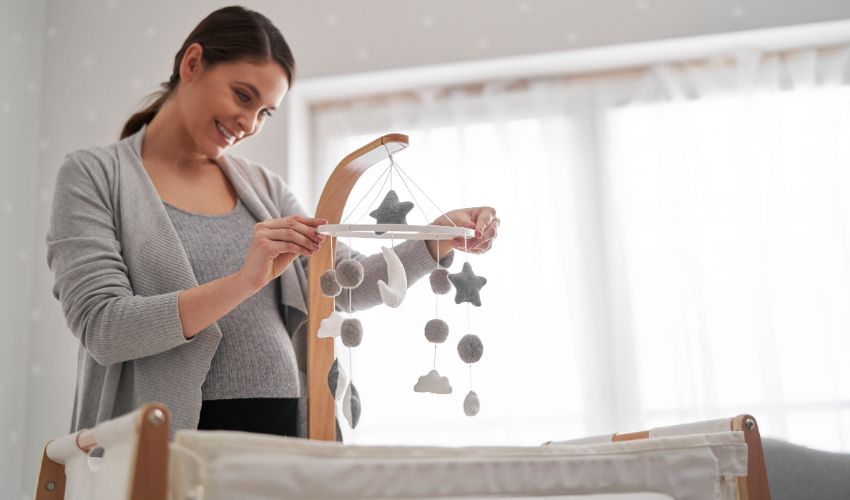
4. A Laptop and/or Smart Phone
The reality is, literally every business owner needs a laptop and/or smart phone these days. These devices will be essential for keeping track of your appointments and projects, communicating with clients, managing your finances, etc. Additionally, you’ll need to be reachable, since you never know when a prospective client will be trying to contact you!
The good news is, there are all sorts of great laptops and smartphones on the market nowadays that won’t break the bank. If you don’t have one already, we recommend doing some comparison shopping so that you can find the perfect device for your needs!
5. A Website For Your Interior Decorating Business
What list of the best tools to grow your interior decorating business would be complete without talking about your website? This is absolutely essential in order to have a strong online presence for your company.
Contrary to what you might think, your website doesn’t actually need to be fancy or complicated. It just needs to include all of the need-to-know information about your company. Your contact info, provided services, prices, social media links, portfolio, and online booking are all prime examples.
If you’re new to building a website, there are countless resources and guides available online. This guide by Business News Daily is a terrific example! If you have the budget for it, another thing you can do is hire a web designer to create the site for you.
No matter which route you take, just ensure to set aside the appropriate amount of time and money for this critical task!
6. Your Professional Interior Decorating Portfolio
When you’re first starting out in the design industry, it’s important to build up a strong portfolio of your interior decorating work. This portfolio will demonstrate to clients what you’re capable of – as well as help them decide if you’re the right decorator for their needs.
Your portfolio can include things like before vs. after photos, behind-the-scenes videos, customer testimonials, etc. Also, if you have any previous experience working as an interior decorator, be sure to include that in your portfolio as well!
The thing about your portfolio is that it’ll take time and effort to build it up and make it strong. It’s not the sort of thing you can perfect overnight, right at the very start. However, it will be worth it in the long run – especially once you start booking clients left and right!
Did you know that QC Design School offers an online Accelerate Your Business Workshop that focuses on portfolio development as part of its curriculum? It’s true! In as little as 12 weeks, learn everything you need to know about building a solid portfolio… As well as how to launch (and run) a brand-new business successfully!
7. Business Cards
Another important marketing tool to grow your interior decorating business are business cards. These can be handed out to potential customers, left at local businesses, distributed at industry events, or simply given to anyone who expresses interest in your decorating services.
When creating your business cards, make sure it includes the following info:
- Your name
- The name of your interior decorating business
- Your professional designation (e.g., International Design and Decorating Professional (IDDP), as provided to graduates of QC Design School’s Interior Decorating Course)
- Social media handle(s) and icons representing the platforms you’re on
- The link to your website
- Your contact information
Additionally, you might also want to include your headshot on your business cards. This way, people can remember your face! Furthermore, you might also wish to include a brief tagline or slogan – something that sums up what you do and why you’re the best at it!
There are all sorts of online printing companies that offer affordable business card printing services, so do a little research. The most important thing we recommend, when the time comes that you’re ready to print your cards, is making sure that you order enough for all your marketing needs!
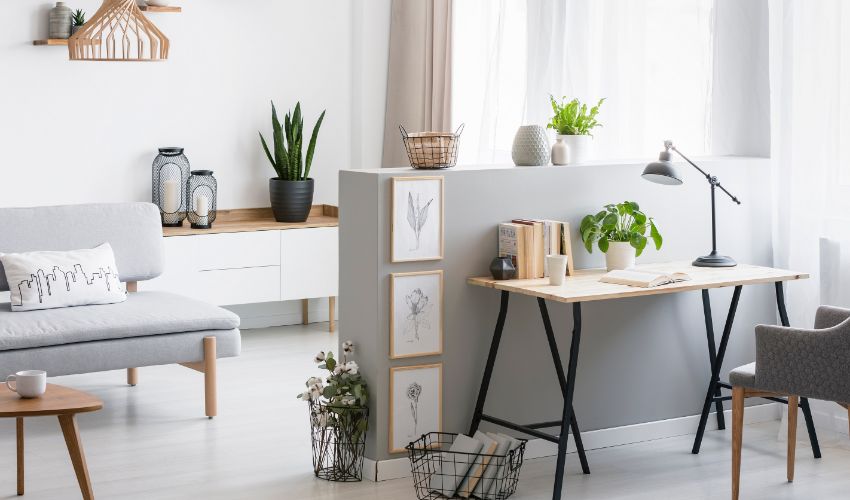
8. Social Media Accounts
Last but not least, a strong social media presence is definitely one of the best tools to grow your interior decorating business. Thanks to the power of social media, you’ll be able to reach a wider audience AND connect with potential clients from all around the world!
These days, some of the most popular social media platforms include Facebook, Instagram, TikTok, LinkedIn, Twitter, and YouTube. Of course, there are plenty of other options out there as well. So, why not look around and see which one(s) would make the most sense for your business?
Importantly, once you’ve set up your profiles, be sure to regularly populate them with high-quality content. Original photos/videos, design and decorating advice/tips, blog articles, and positive client reviews are all excellent things to share. And as a result, you’ll be showing people how serious you are about your business.
Plus, posting high-quality content on a consistent basis will help you attract more and more followers!
Software To Grow Your Interior Decorating Business
Now let’s turn our attention to some useful software tools that can help you grow your company. As with everything else on this list, keep in mind that these are just some of the options at your disposal. With a little online research, you’ll find even more potential software that could work just as well for you.
1. Asana
Project management software will be your best friend – and Asana will help you keep track of all your skincare clients, appointments, and tasks, all in one place. When you’re trying to stay organized and on top of your business, this type of tool is remarkably useful. And let’s face it, staying organized is something that every business owner is forever doing!
2. Mailchimp
Email campaigns will be yet another one of the best tools to grow your interior decorating business. When it comes to this kind of software, Mailchimp is considered the best of the best! With it, you can create and send newsletters, email campaigns, and other marketing materials.
All of this is super important, as you’ll be able to then stay in touch with your clients and promote your business at the same time!
Like Asana, Mailchimp also offers a free plan for small businesses, which we highly recommend taking advantage of. If you want alternatives to Mailchimp, consider Sendinblue or Constant Contact instead.
3. QuickBooks
Accounting software is a staple for any entrepreneur who either doesn’t have the budget to hire out an accountant, or simply wishes to manage their finances themselves. QuickBooks is – hands-down – one of the best software tools out there!
Thanks to QuickBooks, you can effortlessly manage your finances, invoices, and expenses all under one roof. Plus, they offer a free trial, too. As a result, you can try out their services before committing to a paid plan.
Not a fan of QuickBooks? No problem! We also recommend FreshBooks, too.
4. Zoom Events
Nowadays, virtual design services are all the rage – and when people want to hold any sort of online meeting, they turn to Zoom Events!
Zoom Events is comprehensive, virtual platform that can help you run digital client consultations, follow-up appointments, online classes, etc. With this handy tool, you can live stream, have chat rooms, host webinars, or create breakout sessions. It also helps that Zoom’s platform is super easy to navigate and user-friendly.
That said, our top favorite thing about Zoom Events is that they, too, offer a free plan for small businesses. But obviously, if you don’t want to use Zoom, there are other choices to pick from. Webex or Google Meet are extremely popular!
5. Wix
As we discussed earlier, one of the best tools to grow your interior decorating business is a website. And Wix is considered to be BEST all-around website builder, according to Superb Website Builders! With Wix’s user-friendly platform, you’re given tons of free templates and designs to choose from, as well as powerful features.
Interested in other website builders, outside of Wix? Then consider giving Weebly, WordPress, or Squarespace a try!
6. CAD Software
Next up, we can’t forget about CAD software! This type of tool is essential for any interior decorator, as it allows you to create accurate drawings and designs of rooms. Plus, with CAD software, you can make any needed changes quickly and easily.
Pro Tip: Here are 5 other types of CAD software that’ll help you create the BEST rooms and floor plans for your clients!
7. 3D Interior Design Software
If you want to take your design business to the next level, then we highly recommend investing in some sort of interior design software. This type of tool is perfect for when you need to create detailed and comprehensive drawings or designs for your clients. Plus, it’ll help you save time and money in the long run!
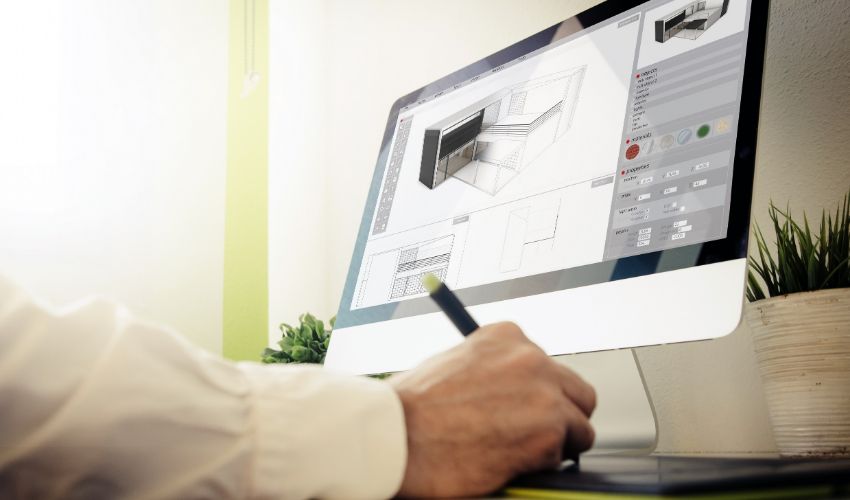
8. Pinterest
Ah, Pinterest – one of the best tools to grow your interior decorating business! As you probably know, Pinterest is a visual social media platform where people can share and discover new ideas. And since it’s so heavily focused on visuals, it’s the perfect place to showcase your work as an interior decorator!
Not only that, but you can also use Pinterest to drive traffic back to your website or blog. Simply create pins for each of your blog posts, and include a link back to your site in the pin description.
Pro Tip: Don’t forget to optimize your Pinterest profile! Make sure to include keywords in your bio, as well as in the titles and descriptions of your boards.
On-The-Job Supplies and Tools To Grow Your Interior Decorating Business
Finally, let’s take look at the items you’ll need in order to actually do your job as a professional interior decorator. After all, you can’t complete any design project without the proper supplies!
1. A Tool Belt
As an interior decorator, you’ll need to be able to move around easily and have all of your tools within reach. That’s why we recommend investing in a good tool belt! This way, you can keep all of your essential supplies close by, without having to lug around a giant tool box.
Plus, there are tons of different types of tool belts available on the market, so you’re sure to find one that fits your needs perfectly. Some of our favorites include the Occidental Leather 5060DB and the Custom Leathercraft CLC 1134.
2. The Floor Plan(s) You’ve Designed
Of course, you can’t forget the floor plans! Once you’ve designed the perfect floor plan for your client’s space, make sure to print out several copies. That way, you’ll have them on hand when it comes time to actually start decorating.
Pro Tip: Laminate your floor plans! This will protect them from damage and ensure that they last for years to come.
3. Your 3D Design Illustration(s)
Next, you’ll need to bring your design to life with some sort of three-dimensional illustration. This could be a hand-drawn sketch or a computer-generated rendering. Either way, make sure you have several copies on hand, so you can reference them during the decorating process.
Pro Tip: If you’re working with a client who’s not very visual, consider creating a mood board instead (such as with Pinterest). This is basically a collage of images that represent your proposed design. It’s a great way to give your clients a better idea of what their space will look like once it’s finished!
4. Measuring Tools
You’ll also need a few measuring tools, such as a tape measure, a laser level, and some sort of measuring wheel. These will come in handy when you’re trying to figure out dimensions or calculate distances.
This is just one reason why it’s important to invest in a good quality tape measure! This is one tool that you’ll use on almost every design project, so it’s worth splurging on a high-quality model. We recommend the Stanley 33-425 Powerlock or the Milwaukee 48-22-5225 Tape Measure.
5. Protective Face and Head Gear
Additionally, you’ll also need to invest in some sort of protective gear. This is particularly important if you’re working with power tools or hazardous materials.
At the very least, we recommend wearing a good pair of safety glasses and a dust mask. But if you’ll be working with power tools regularly, you might also want to invest in a hard hat and some ear protection.
6. A Sketchbook or Notebook
If you opt for a physical notebook, we recommend getting one with graph paper pages. That way, you can easily sketch out floor plans and other designs without having to worry about measurements!

7. A Color Wheel
Another key investment, in terms of tools to help you do your job, would be a color wheel. This is essential for any interior decorator, as it will help you choose the perfect color scheme for your client’s space.
There are tons of different color wheels available on the market, so take your time to find one that fits your needs. That said, we personally recommend the Benjamin Moore Color Palettes or the Pantone Color Guide.
8. Comfortable Shoes
Another must-have tool you’ll need is a good pair of comfortable shoes! After all, you’ll be spending a lot of time on your feet, so you might as well be comfortable.
There are tons of different types of shoes available for interior designers. But our personal favorites are the Skechers GOrun MaxRoad and the New Balance Fresh Foam 1080v11.
9. Excellent People Skills
This is easily one of the most important tools on our entire list. After all, as an interior decorator, your job is to help people create beautiful spaces in their homes.
As such, you’ll need to be able to effectively communicate with clients, understand their needs, and work well under pressure. Not to mention, you also need to be pleasant to work with. If you don’t have these skills, it’ll be very difficult to succeed in the interior decorating industry.
10. An Eye For Design
Of course, the most important tool you’ll need for your interior decorating business is an eye for design! This is something that doesn’t necessarily come naturally for everybody… But if you have the passion for it, it can be taught!
If you’re not sure whether or not you inherently have an eye for design, ask yourself this question: Do people often compliment your sense of style and/or the way your home always looks? If so, then chances are you have what it takes to be a successful interior decorator!
That said, though, if you weren’t born with an eye for design, this doesn’t mean you can’t still pursue a career in this field. As we said, so long as you have the passion for it and are willing to learn through proper training, this is a skill you can certainly develop over time!
The Bottom Line
Phew, that was a lot of info to take in… Kudos to you for sticking it out ’til the end!
Remember: these are just a handful of the essential tools you’ll need to grow your interior decorating business. And while some of these things are physical products, others (like people skills and an eye for design) are more intangible.
Either way, make no mistake: all of these tools are essential if you want to be successful in this field! So, if you’re serious about pursuing a career in interior decorating, be sure to invest in everything discussed in this article.
Trust us, it’ll be worth it in the long run!
Thanks for reading! 🙂


